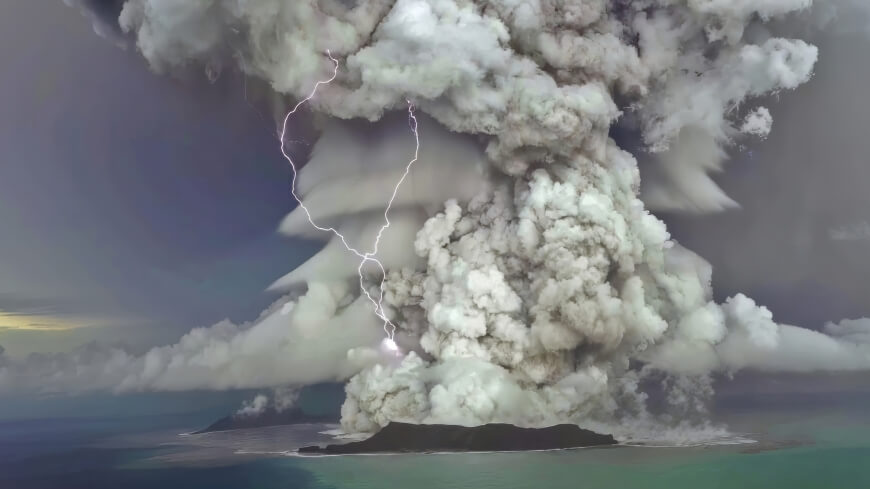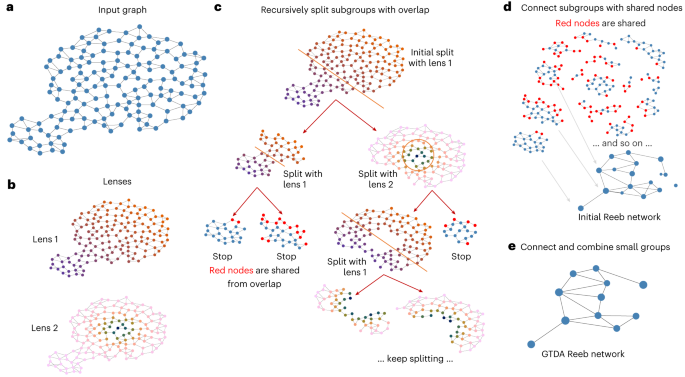2023-11-20 ハーバード大学

Eruption of the Hunga Tonga-Hunga Ha’apai volcano in the South Pacific on January 14, 2022, one day prior to the larger eruption plume that would significantly impact stratospheric composition. (Tonga Geological Services, Adapted from Wikimedia Commons, CC BY 3.0)
◆この異常な噴火は地球の史上最大のものであり、成層圏に達したエアロゾルとガスが気象変化を引き起こしました。成層圏に注入された水蒸気と二酸化硫黄により、化学反応と気象変化が連鎖的に発生し、オゾン濃度の広範な変化が観測されました。特に、水蒸気と硫酸エアロゾルは大気中の複雑な化学反応を引き起こし、オゾンの減少をもたらしました。研究者たちは、この噴火による影響が地球の成層圏で未知の領域であると述べています。
<関連情報>
- https://seas.harvard.edu/news/2023/11/massive-2022-eruption-reduced-ozone-levels
- https://www.pnas.org/doi/10.1073/pnas.2301994120
ハンガトンガ火山噴火の成層圏組成への影響 Impact of the Hunga Tonga volcanic eruption on stratospheric composition
David M. Wilmouth, Freja F. Østerstrøm, Jessica B. Smith, James G. Anderson, and Ross J. Salawitch
Proceedings of the National Academy of Sciences Published:October 30, 2023
DOI:https://doi.org/10.1073/pnas.2301994120

Significance
The Hunga Tonga-Hunga Ha’apai (HTHH) volcanic eruption on 15 January 2022 is unprecedented in the modern era in both the amount of water vapor injected into the stratosphere and the depth of penetration. The perturbation to water vapor and sulfate aerosols from this volcano significantly altered temperatures, dynamics, and chemistry in the stratosphere, including reductions in stratospheric column ozone, which is essential for protecting life on Earth from harmful ultraviolet radiation. Here, the global evolution of the injected water vapor in latitude, altitude, and time is analyzed for the year following the eruption using satellite data. Significant changes in the concentrations of various chemical compounds in the stratosphere are identified and linked to the HTHH eruption.
Abstract
The explosive eruption of the Hunga Tonga-Hunga Ha’apai (HTHH) volcano on 15 January 2022 injected more water vapor into the stratosphere and to higher altitudes than ever observed in the satellite era. Here, the evolution of the stratospherically injected water vapor is examined as a function of latitude, altitude, and time in the year following the eruption (February to December 2022), and perturbations to stratospheric chemical composition resulting from the increased sulfate aerosols and water vapor are identified and analyzed. The average calculated mass distribution of elevated water vapor between hemispheres is approximately 78% Southern Hemisphere (SH) and 22% Northern Hemisphere in 2022. Significant changes in stratospheric composition following the HTHH eruption are identified using observations from the Aura Microwave Limb Sounder satellite instrument. The dominant features in the monthly mean vertical profiles averaged over 15° latitude ranges are decreases in O3 (–14%) and HCl (–22%) at SH midlatitudes and increases in ClO (>100%) and HNO3 (43%) in the tropics, with peak pressure-level perturbations listed. Anomalies in column ozone from 1.2–100 hPa due to the HTHH eruption include widespread O3 reductions in SH midlatitudes and O3 increases in the tropics, with peak anomalies in 15° latitude-binned, monthly averages of approximately –7% and +5%, respectively, occurring in austral spring. Using a 3-dimensional chemistry–climate–aerosol model and observational tracer correlations, changes in stratospheric composition are found to be due to both dynamical and chemical factors.



